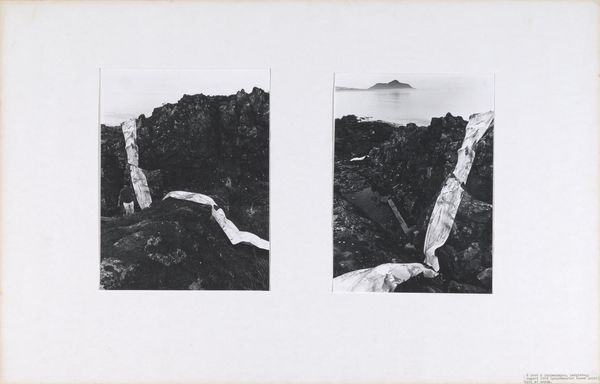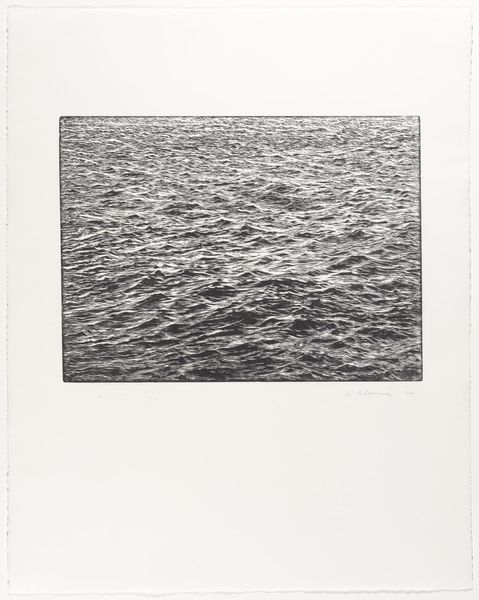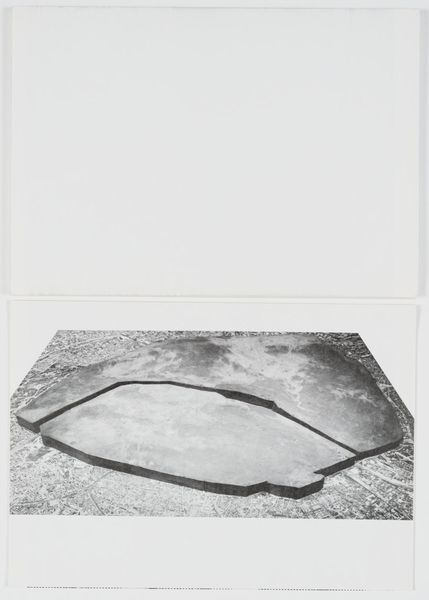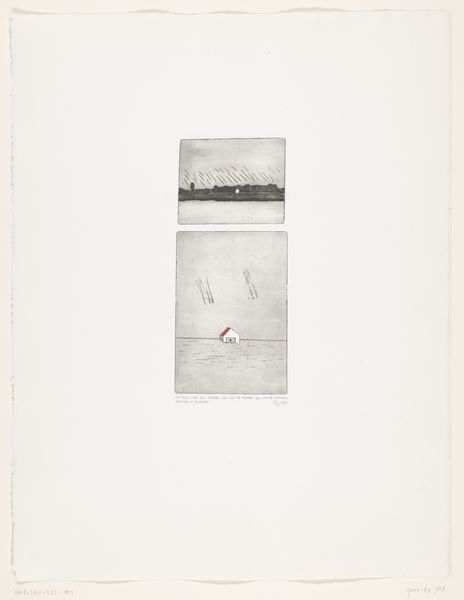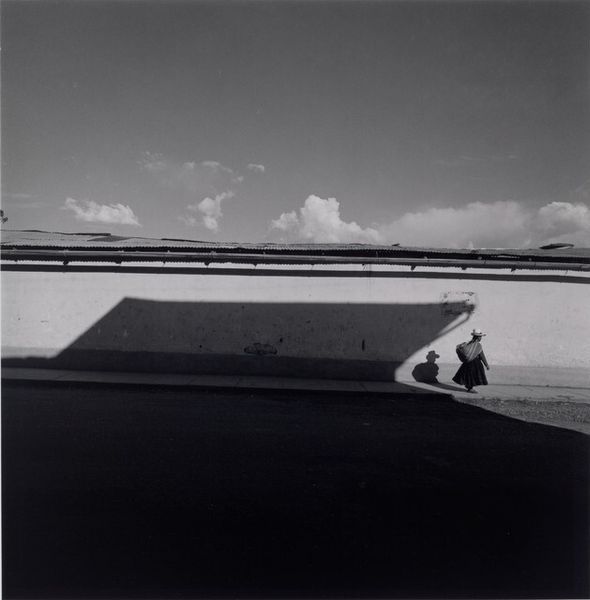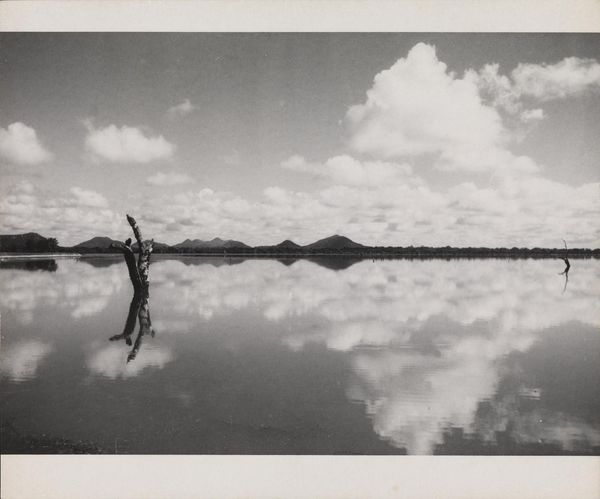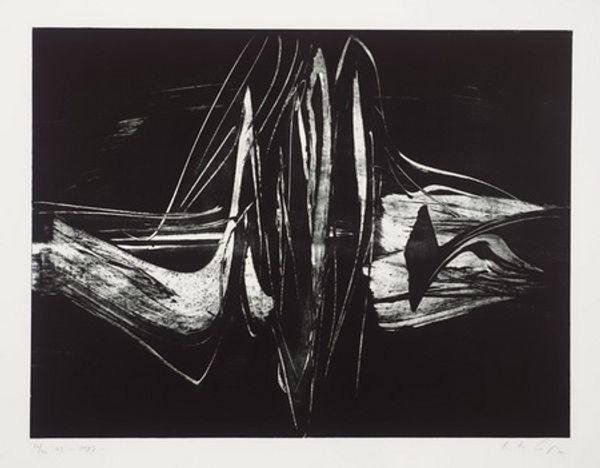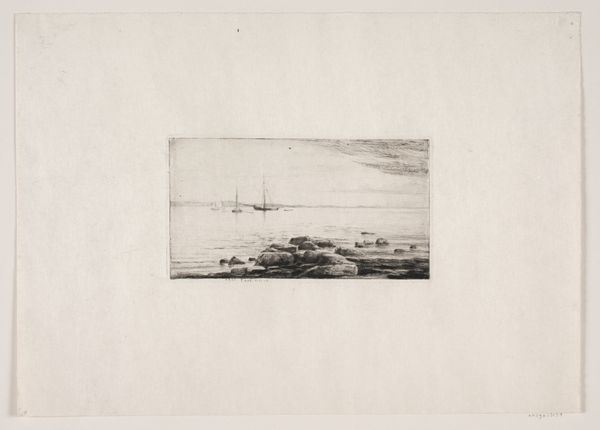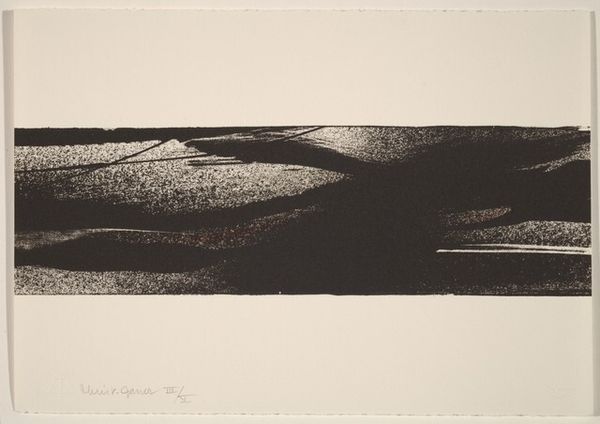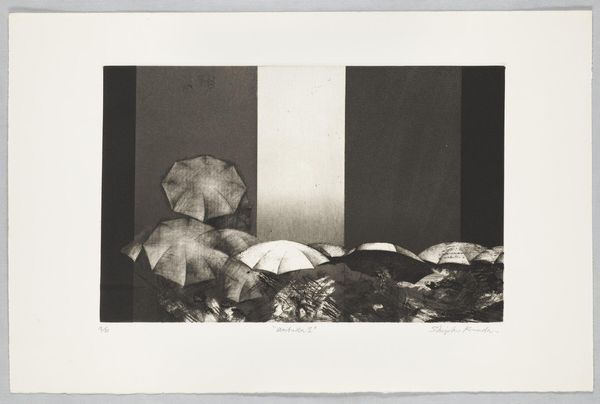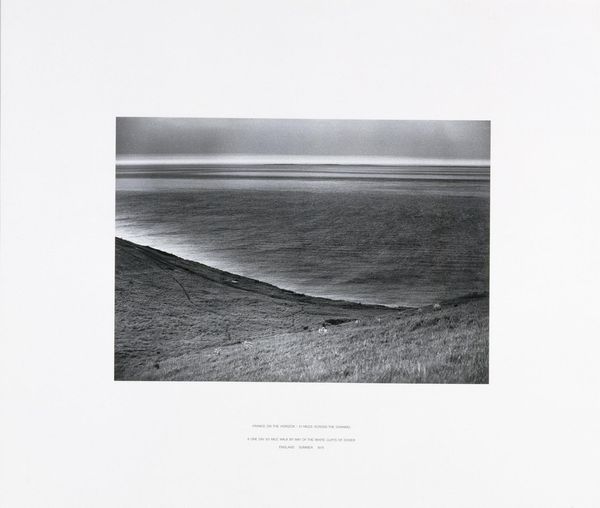
Dimensions: unconfirmed: 505 x 787 mm
Copyright: © Bruce McLean | CC-BY-NC-ND 4.0 DEED, Photo: Tate
Curator: This is Bruce McLean's "150ft Seaskape, Largiebeg," part of the Tate collection. It strikes me as a rather unusual diptych. Editor: The stark contrast of the white fabric against the dark sea is immediately arresting. It feels temporary, ephemeral—almost a performance documented. Curator: Indeed! McLean often blurred boundaries, and his work often incorporated temporary sculptures, which he documents in photographic form. The use of fabric here is key; it is an everyday material. Editor: And the way he places it within this natural environment—it's a commentary, isn't it? A critique of land art perhaps, or the performative aspect of environmental interventions? Curator: Precisely. It makes me consider the labor involved in producing and installing such a piece and the conceptual underpinnings of its fleeting presence. Editor: It reminds us that art doesn't need to be monumental or lasting to make a powerful statement. It is about the process and the intervention. Curator: Absolutely, and it reveals the beauty in impermanence. Editor: A powerful reflection of the transient nature of environmental art.
Comments
tate 8 months ago
⋮
http://www.tate.org.uk/art/artworks/mclean-150ft-seaskape-largiebeg-t01738
Join the conversation
Join millions of artists and users on Artera today and experience the ultimate creative platform.
tate 8 months ago
⋮
This work records McLean’s attempt to make paintings in which the landscape itself played an active, creative role. He laid a 150-foot roll of sensitised paper on the seashore at Largiebeg on the east coast of the Isle of Arran, and intended to let the incoming tide mark the paper. However, the tide came in so quickly that the paper floated out to sea. The paper is of a type used for reproducing architectural drawings, which changes colour when exposed to light (not water). But the location McLean chose was the sea, because in seascape paintings the sea is blue. Gallery label, February 2010


